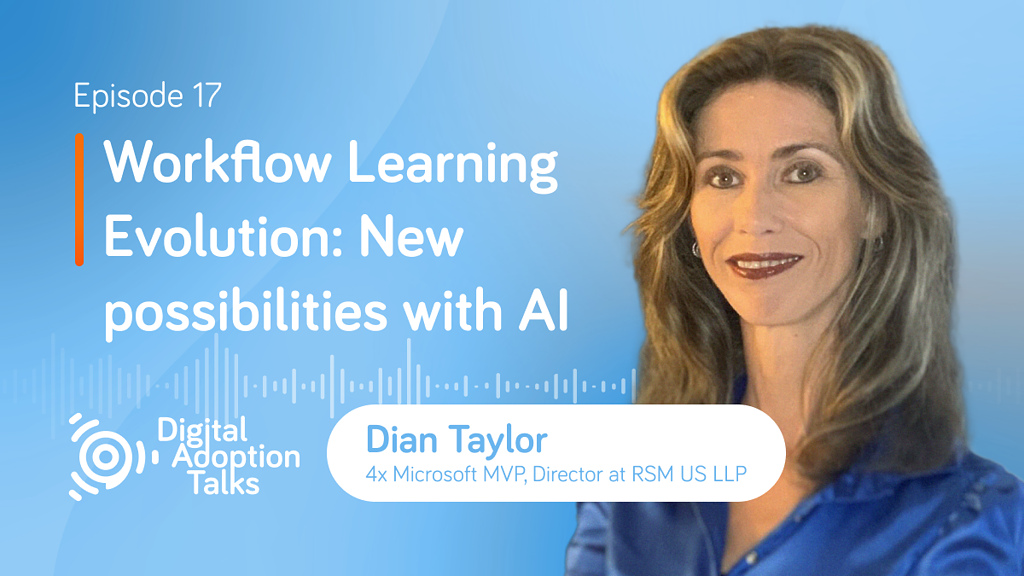If you have a good digital adoption strategy, you’re going to have so much better and more efficient workflows, right. People are going to be more efficient. So the productivity is going to be so much better, which then is like a domino effect almost, right?

Dian Taylor, 4X Microsoft MVP, Director at RSM US LLP | LinkedIn Learning Author
Are you looking to get ahead in the digital adoption game? Then you don’t want to miss out on this episode of Digital Adoption Talks. We’re revealing news on developments in Microsoft Copilot and ClickLearn’s integration with OpenAI.
We’re talking about the forefront of how AI is helping with digital adoption, from providing personalized onboarding experiences to bringing relevant content directly to the right users at the right time.
You’ll hear about the need for technology for improving customer experiences. This podcast delves into the importance of staying up to date on new technologies and understanding how to apply them to solve customer problems.
We explore how AI-based tools can help with digital adoption and the need to design onboarding experiences that are tailored to the user. We also discuss the value of having conversations about digital adoption with clients early on in the project and ways to extend user adoption across multiple applications and workflows.
